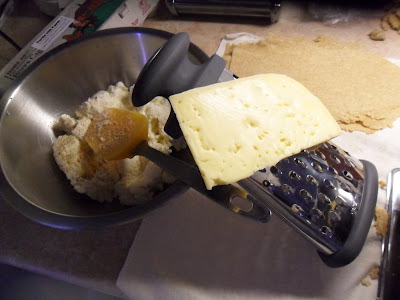It is easy for us to see a nativity scene, perhaps figures cut out of one-dimensional fiber board painted to look like us, pale and rosy, and never think twice about the knowing and contented smile given to Mary’s expression. It is assumptive of our society to believe that women are always filled with happiness upon the birth of their children. We do not want to believe otherwise, because that would mean that women may serve another purpose on this Earth apart from bearing the next generation of the species. I felt especially compelled to write this blog after my week at work was filled with conversation about children and family, and more specifically, after talking to my co-worker about the post-partum depression she experienced. Note that a woman who feels depressed or saddened after giving birth and facing the reality of now having to care for every need of a tiny, undeveloped human being has to be referred to as a medical condition, and not simply a normal, or healthy occurrence.
Can you imagine what Mary’s first Christmas was like? Think of your most loved family members. Think of the only people you’ve ever known to be loyally, devotedly yours. Think of the people you’ve always known, the townspeople and villagers that make up the passersby, the comings and goings of your day. Think of the woman at the drugstore who always asks about your son. Think of the man who delivers your mail and waves at you from the loading dock of the sleepy morning Post Office as you drive past. Think of the familiarities, the things from which you derive unconscious comfort each day. Now think of venturing far from that place, those people, and that comfort. You are traveling to a place you’ve never been with someone you barely know, who has been entrusted with your care. You are nine months pregnant, and those months have been filled with ridicule, skepticism and flat out confrontational harassment. You’re a teenager. This is your first child, and therefore your first everything. Is it impossible to imagine that after her baby was born, that perhaps instead of the glistening ray of a divine star shining through the roof of a barn, illuminating a post-card portrait of a new family, that instead Mary was just a bit frightened, unsure, and worst of all, perhaps lonely? It isn’t hard for me to imagine, and these thoughts make me love and cherish her so much more. I want these thoughts to help comfort others who feel those kinds of emotions this coming holiday.
This will be my second Christmas that is somewhat different, not only from the last, but also from the 22 I’ve celebrated before. I can’t help but feel my heart connecting to Mary and the bewilderment of a screaming child, in a lonely, unfamiliar and isolated place. When she found the familiarity of a swollen belly and a tiny, gentle kicking from the inside out to be gone and before her lay a human infant she’d never experienced as her own before, I think that’s something we can all relate to in one way or another. But the joy of this story is that the comfort returns, that we are resilient creatures, that love is our most powerful connector. As I move on from Sarah McLachlan’s “Wintersong,” to Patty Griffin’s “Mary,” I listen to words written about a woman who bears it all. A story of a mother who loved her child more than she loved herself, and while her worth is not measured in that selfless love, it shines on her personality, her character and her sense of devotion to something larger than, greater than herself. The things in this world that we find are greater than ourselves are the things I find myself taking comfort in on these somewhat lonely days leading up to Christmas. Compassion and love remind me daily of why we’re celebrating on Saturday. The joy that lights my face when I think on the new friends I’ve made, the loyal kinship I’ve found with a handful of beautiful people I’d not known before reminds me that celebrating goes far beyond a tinsel trimmed tree and a man in a red suit. Seeing the face of the mother that loves me, as Mary loved her own child, reminds me that some of what is familiar to me will always be so, that I will not lose everything, that there are things in which I can still trust.
I will spend Christmas Eve using my hands to knead pasta dough, and my fingers to roll out tiny, delicate cavetelli on a floured board, just the way my Grandmother did. My mother is going to teach me how to make them for the very first time. I spent the week making Italian Panettone, reminding me of the warm, crusty slices my Mom would take from the toaster and slather with butter for me at Christmas time when I was a child. I made torrone from scratch, an Italian nougat candy as old as Ancient Rome, which made my mind recall the Christmas dinner’s we’d spend at my Aunt and Uncle’s house. We’d sit around a table in a dimly lit, blue wall-papered dining room, surrounded by breakable pieces of Fitz and Floyd and Spode dinnerware, and an antique silver service. Around this table we’d laugh, eat far too much, and end our meal unwrapping tiny portrait painted boxes of lemon, orange and vanilla torrone. The familiar has not left me. Comfort and joy thrive within my memories, my heritage and the newly sewn patches to the quilt that blankets my heart. Buon Natale. Merry Christmas from Queen Honeybea.

Panetone.

Gooey Torrone.
Perhaps my favorite Christmas song.


















